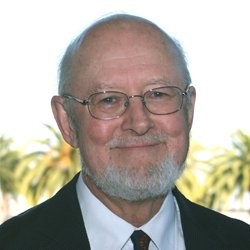Higher ed communications and the climate crisis
By Sharon Aschaiek | Jan. 29, 2020
What does higher education communications have to do with global warming, and vice versa?
The climate crisis, and its grave threats to human survival, has become a growing concern for many of us. Individually, more and more of us are trying to live more sustainably. Some progressive government policies and company practices are emerging. Banks are starting to turn away energy-sector clients. We are all being challenged to do what we can.
In the higher education sector, universities and colleges are taking many steps, including trying to operate more sustainably, support research on climate change effects and tactics, and shift endowments to more low-carbon investments. But post-secondary schools, and their communicators, may have a broader, more meaningful role to play in addressing the climate emergency.
The Last Humans Project

Trent Batson says the higher education sector is the logical choice for leading the human response to the climate crisis. The U.S.-based former university English and computing professor and former senior education innovation administrator (MIT’s Office of Educational Innovation and Technology; Association for Authentic, Experiential and Evidence-Based Learning) is proposing a new design for all global higher education geared toward solving the many complex problems arising from our current sixth mass extinction. He says post-secondary schools can be uniquely effective at helping not just their own campuses, but their local communities, adapt to and mitigate the effects of climate change.
Batson’s ideas are encompassed in The Last Humans Project, a movement he started this month. It begins with a book he is writing on this topic, the chapters of which he will periodically publish on his website for free. More broadly, it invites higher ed to be a whole-sector leader on this issue, and is offering ideas for next steps.
Batson’s premise is that higher ed, as a primarily non-profit sector, is well positioned to advance the social good of preserving civil society, particularly by embracing language as the main driver of our societies and cultures. He advocates for all 19,400 higher ed institutions worldwide to adopt a universal mission to lead the human response to the climate crisis.
Said Batson in a recent University World News article: “By emphasizing not just STEM—science, technology, engineering and mathematics—which are all derivative thinking abilities, but the source of those derivatives (language), we can use our natural tendencies and build on them to help humanity survive. We can build a curriculum that fosters our communication abilities, creativity, innovation and action, a curriculum which is just what this century needs.”
“This would move higher education beyond developing individuals who, when they graduate, may or may not themselves do ‘social good’. What if, instead, some percentage of those graduates had deep experience of working on climate crisis projects?”
Climate change communications
The Last Humans Project feels prescient to me. Certainly, universities and colleges are already investing more and more resources into climate change strategies for their institutions. It is conceivable that they will start to play bigger roles in supporting their local communities affected by climate-induced disasters such as flooding, fires and crop failures. From there, it feels like just another step or two down the road toward climate crisis collaboration between institutions.
If and/or when post-secondary schools work in a more coordinated way to address the climate emergency, communications folks will be among those helping to execute these efforts. We have the expertise to help our sector live its historical values of serving the social good. We can—and should—use our communications knowledge, skills and experience to help humanity deal with the biggest crisis we may ever face.
